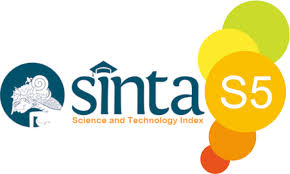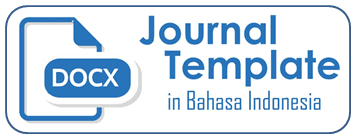The Impact of Information Technology and Cross-Unit Coordination on Transparency and Accountability of Public Services at the Ministry of Agriculture in 2024
DOI:
https://doi.org/10.52188/jeas.v6i2.1439Keywords:
Public Information Disclosure, PPID, Ministry of Agriculture, Transparency, AccountabilityAbstract
Study purpose. This study aims to examine the factors that influence the performance of public information services at the Ministry of Agriculture of the Republic of Indonesia in 2024, with an emphasis on the role of digital service innovation, cross-unit coordination, and the strengthening of Information and Documentation Management Officers (PPID).
Materials and Methods. The research method used a quantitative survey approach on 1,673 public information requests received through various PPID service channels. The research variables consisted of information technology utilisation (X1), cross-unit coordination (X2), strengthening the role of PPID (Z), and transparency and accountability of public services (Y).
Results. The research results indicate that the utilisation of information technology and cross-unit coordination significantly influence the improvement of transparency and accountability in public services, both directly and through the strengthening of the role of PPID. The average time to complete a request is 4 days, 9 hours, and 59 minutes, which is faster than the deadline set by the KIP Law. Pearson's correlation indicates a negative relationship between the volume of requests and service speed (r = -0.62; p < 0.05). The Chi-Square test shows a significant relationship between the educational level of the requester and the category of information requested (p < 0.01).
Conclusion. The role of the PPID has been proven to mediate the effectiveness of digital innovation and cross-unit coordination in improving transparency and accountability. Recommendations: There is a need for a special budget allocation for digital service innovation and regular coordination forums between work units. The limitation of this study is the lack of previous research on the role of the PPID as a mediating variable, so further research with a broader scope is still needed. The novelty of this study lies in the model that positions the role of PPID as an intermediate variable, which has not been extensively studied in the context of public information disclosure in Indonesia.
References
Blumler, J. G., & Katz, E. (1974). The Uses of Mass Communications: Current Perspectives on Gratifications Research. Sage.
Boin, A., McConnell, A., & ’t Hart, P. (2010). Crisis Exploitation: Political and Policy Impacts of Framing Contests. Journal of European Public Policy, 17(1), 81–106.
Creswell, J. W. (2014). Research Design: Qualitative, Quantitative, and Mixed Methods Approaches (4th ed.). Sage.
Davis, F. D. (1989). Perceived Usefulness, Perceived Ease of Use, and User Acceptance of Information Technology. MIS Quarterly, 13(3), 319–340.
Dunleavy, P., Margetts, H., Bastow, S., & Tinkler, J. (2006). Digital Era Governance: IT Corporations, the State, and E-Government. Oxford University Press.
Grönroos, C. (2007). Service Management and Marketing: Customer Management in Service Competition. Wiley.
Gulick, L., & Urwick, L. (1937). Papers on the Science of Administration. Institute of Public Administration.
Jalonen, H, Hannele V, Helander N, (2023). Public Innovation and Digital Transformation, Routledge.
Heeks, R. (2006). Implementing and Managing eGovernment. Sage.
Hood, C. (1991). A Public Management for All Seasons? Public Administration, 69(1), 3–19.
Indonesia. (2008). Undang-Undang Nomor 14 Tahun 2008 tentang Keterbukaan Informasi Publik. LNRI 2008 No. 46.
Komisi Informasi. (2010). Peraturan Komisi Informasi Nomor 1 Tahun 2010 tentang Standar Layanan Informasi Publik. Jakarta.
Komisi Informasi Pusat. (2024). Laporan Monitoring dan Evaluasi Keterbukaan Informasi Publik. Jakarta.
Kotler, P., & Keller, K. L. (2016). Marketing Management (15th ed.). Pearson.
Kementerian Pertanian RI. (2024). Laporan Pengelolaan Akses Layanan Informasi Publik Tahun 2024. Jakarta.
Lee, Y. W., Strong, D. M., Kahn, B. K., & Wang, R. Y. (2002). AIMQ: A Methodology for Information Quality Assessment. Information & Management, 40(2), 133–146.
Osborne, D., & Gaebler, T. (1992). Reinventing Government. Addison-Wesley.
Parasuraman, A., Zeithaml, V. A., & Berry, L. L. (1985). A Conceptual Model of Service Quality. Journal of Marketing, 49(4), 41–50.
Rawlins, B. (2008). Measuring the Relationship between Organizational Transparency and Employee Trust. Public Relations Journal, 2(2), 1–21.
Scott, W. R. (2001). Institutions and Organizations. Sage.
Tumbel, Goinpeace H (2023). TeoriAdminsitrasi Publik. Lakeisha.
UNDP. (1997). Governance for Sustainable Human Development. UNDP.








